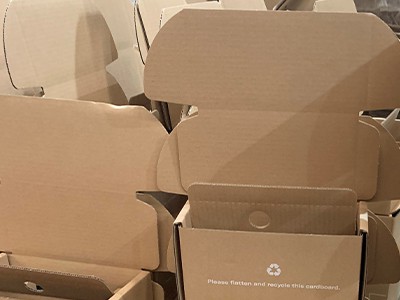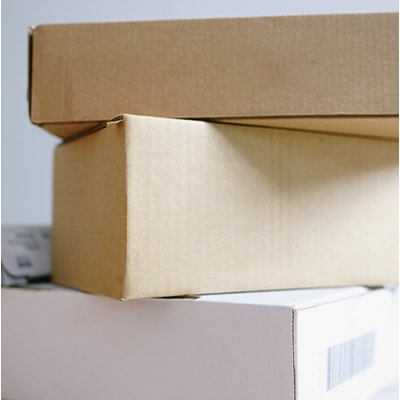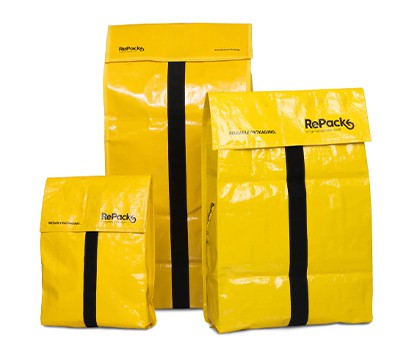Sustainable packaging is fast becoming a higher priority for both brand and the consumer alike – more now than ever before. The term ‘eco-friendly packaging’ is clearly more than just a buzzword. In fact, implementing sustainable packaging is no longer an option – it is a necessity.

Sustainable packaging delivers the full value of the product(s) contained within and does so with the least amount of negative economic, environmental, and social impact throughout its lifecycle. Sustainable packaging must also fulfil all the primary functions of packaging – product containment and protection, communication, branding, and convenience. 90 – 95% of the environmental impact of a product and its packaging is generated by the product itself; therefore product protection should remain a key element of sustainable packaging decision making.
Design4Life Sustainable Packaging Guidelines
To tackle this head on, Sourcebynet has recently introduced its Design4Life Sustainable Packaging Guidelines. This provides guidance on regulations, instructions, and direction on how to ensure packaging proposed by Sourcebynet is sustainable. The guidelines give an insight into sustainable packaging solutions, and the selection & quality types of packaging to be used for furniture products. The guidelines contain 10 key principles, that must be considered in the design and procurement of packaging to help improve sustainability. They are:
- Design for recovery
- Design to reduce product waste
- Eliminate hazardous materials
- Use renewable materials
- Design to minimise litter
- Design for transport efficiency
- Design for accessibility
- Provide consumer information on sustainability
- Recoverability
- Optimised material efficiency
There are several types of breakthrough sustainable materials evolving every day and Sourcebynet is actively exploring how to integrate these into the current portfolio.
Common materials used for packaging
Each principle plays a key role for any quest to ensure that the packaging used is sustainable. There are several types of material used for packaging, plastic and cardboard being the most common.

Plastic
Plastic is one of the most used materials worldwide for packaging products. It is cost-effective and provides excellent protection to the packaged products. However, single-use plastic packaging is considered bad for the environment. Such packaging is meant to be used only once, after which it is disposed of by the end-consumer. It is not recycled and either ends up in landfills or even worse, in the ocean bed. It is estimated nearly 50% of the plastic packaging is single use and is not recycled. Sourcebynet’s preferred sustainable sources for plastic include Recycled PET and HDPE as well as Fossil-fuel derived free plastic such as durable or biodegradable bioplastic.

Corrugated Cardboard
Corrugated cardboard is another material commonly used for packaging. It is readily available in different types and quality, as well as eco-friendly certification. The type of corrugated cardboard varies in construction with the amount of liners and flutes, and their height. The quality variation is determined by its structure consisting of paper layers. Sourcebynet actively encourages their customers to use eco-friendly packaging, as well as implementing honeycomb structure and protection throughout many of their products.

Mycelium packaging
Mycelium packaging is a prime example at the cutting-edge of innovative sustainable packaging. Agricultural by-products such as hemp waste are recycled from farmers. This sustainable agricultural biomass is then combined with mycelium in trays in a controlled growing environment. Over a period of 5 days the mycelium binds the organic matter together acting like a natural glue.
Seaweed-based packaging
Seaweed-based packaging, also a new and exciting direction as a replacement for plastic, will alleviate the waste management process as it is biodegradable and ensures the packaging waste can return to the earth naturally.

Today, there are several companies globally that are revolutionising the traditional process of returnable packaging by operating as a re-usability platform open to consumer goods companies that are eager to contribute to sustainability initiatives. Initiatives such as this have become increasingly welcomed during the past two years, as nowadays everything we need seems to be dropped off at our doorstep. Although quite primitive within the furniture industry, Sourcebynet are investigating the use of returnable packaging where possible. With a global shift toward fighting climate change, tackling, and delivering sustainable furniture packaging will ever continue grow and develop. Rather than being an alternative option, sustainable packaging is a necessity and Sourcebynet will be at the forefront.



